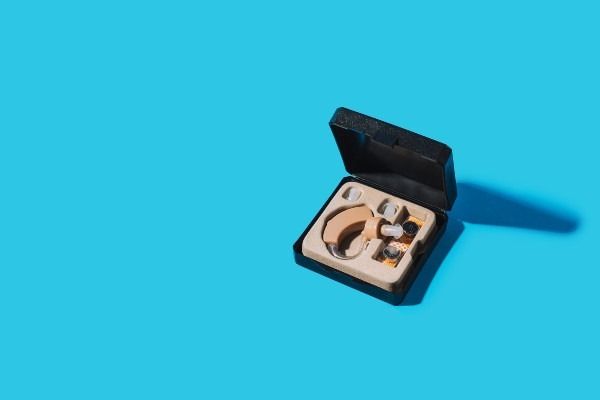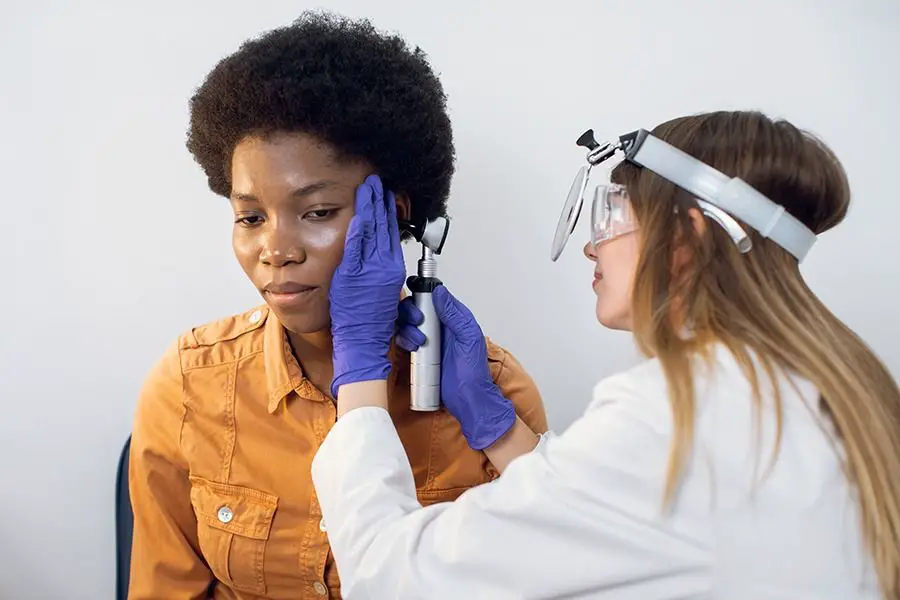Introduction
Mixed hearing loss (MHL) is a unique form of hearing impairment that involves a combination of conductive hearing loss and sensorineural hearing loss. This means that sound transmission is hindered in both the outer or middle ear, and the inner ear or auditory nerve pathway to the brain is damaged. Unlike conductive hearing loss, which can often be treated surgically, MHL often presents a more complex challenge due to the involvement of both conductive and sensorineural components.
Demystifying Mixed Hearing Loss
Understanding Conductive Hearing Loss
Conductive hearing loss arises from a blockage or obstruction in the outer or middle ear, impeding the passage of sound waves to the inner ear. Common causes of conductive hearing loss include:
- Earwax buildup (cerumen impaction)
- Middle ear infections or otitis media
- Perforated eardrum (tympanic membrane perforation)
- Otosclerosis, a condition that causes hardening of the middle ear bones
- Foreign objects in the ear canal
Unraveling Sensorineural Hearing Loss
Sensorineural hearing loss results from damage to the inner ear structures, particularly the hair cells in the cochlea, or the auditory nerve. This type of hearing loss is often irreversible and can be caused by:
- Age-related hearing loss (presbycusis)
- Noise exposure
- Certain medications
- Genetic factors
- Head trauma
AMZ-Lexie Lumen Self-Fitting OTC Hearing Aids
Experience the Ultimate Sound Quality with Lexie Lumen self-fitting OTC hearing aids. These remarkable devices utilize dual microphones to deliver crystal clear sound, immersing you in a world of auditory excellence. Say goodbye to communication struggles in public spaces or on phone calls, as our Telecoil functionality directs speech directly to your hearing aids via an induction loop system. Rediscover the joy of hearing with unmatched clarity and precision.
Embrace an Active Lifestyle with Lexie Lumen hearing aids. Our cutting-edge sweatproof technology, including Nano coating, safeguards against moisture damage, allowing you to wear your hearing aids during outdoor activities like walks, runs, and open-air events. With Lexie, you can live life to the fullest without compromising on the quality or lifespan of your devices. Don’t let hearing loss hold you back—experience the freedom of superior hearing with Lexie Lumen self-fitting OTC hearing aids.
Distinguishing Mixed Hearing Loss
MHL manifests as a combination of symptoms associated with both conductive and sensorineural hearing loss. These symptoms may include:
- Difficulty hearing soft sounds
- Muffled or distorted sounds
- Trouble understanding speech, especially in noisy environments
- Tinnitus, a ringing or buzzing sensation in the ears H2. The Impact of Mixed Hearing Loss on Daily Life
MHL can significantly impact an individual’s daily life, affecting both personal and professional interactions. Common challenges faced by individuals with MHL include:
- Difficulty following conversations in group settings
- Challenges understanding lectures or presentations
- Social isolation due to hearing difficulties
- Struggles comprehending television or radio broadcasts
- Workplace challenges due to impaired hearing
Strategies for Effective Management of Mixed Hearing Loss
Despite the challenges, there are effective strategies to manage MHL and enhance communication:
- Seeking hearing aids or assistive listening devices: Hearing aids can amplify sounds and improve speech understanding. Assistive listening devices, such as cochlear implants, can provide direct auditory stimulation to the inner ear.
- Utilizing communication strategies: Speak clearly and face to face, minimize background noise, and use lip reading and visual cues to support understanding.
- Seeking support groups and counseling: Connecting with others who share similar experiences can provide emotional support and valuable coping strategies.
- Staying up-to-date on advancements: Research and advancements in hearing aid technology, cochlear implants, and gene therapy may offer new treatment options in the future.
Frequently Asked Questions (FAQs)
- Can MHL be prevented?
While some causes of MHL, such as age-related hearing loss and noise exposure, are not preventable, measures like earwax removal, proper ear hygiene, and noise protection can help reduce the risk of conductive hearing loss.
- Are there different types of MHL?
Yes, MHL can be classified based on the severity of both conductive and sensorineural components. This classification helps determine the appropriate treatment plan.
- What is the prognosis for individuals with MHL?
The prognosis for MHL varies depending on the underlying causes and the severity of hearing loss. Early diagnosis and intervention can significantly improve hearing outcomes and overall quality of life.
Practical Tips for Living with Mixed Hearing Loss
- Advocate for yourself: Clearly communicate your hearing needs to family, friends, colleagues, and healthcare providers.
- Take advantage of technology: Utilize hearing aids, assistive listening devices, and smartphone apps designed for hearing support.
- Seek support: Join hearing loss support groups or online communities to connect with others who share your experiences.
- Educate yourself: Learn about MHL, its causes, and available treatment options.
Conclusion
Mixed hearing loss presents a unique set of challenges, but with proper diagnosis, treatment, and management strategies, individuals can effectively communicate and participate fully in their daily lives. By understanding the complexities of MHL and advocating for their hearing needs, people with MHL can lead fulfilling and enriching lives.






